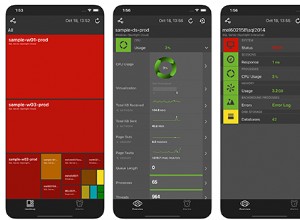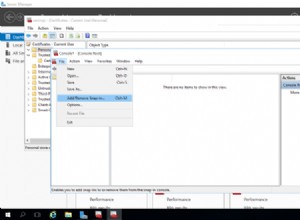Para eliminar parte:
Use addBatch y luego executeBatch:
Statement st = con.createStatement();
st.addBatch("DELETE FROM tbl1");
st.addBatch("DELETE FROM tbl2");
st.addBatch("DELETE FROM tbl3");
int[] results = st.executeBatch();
Luego, los resultados contendrán una matriz con el número de filas eliminadas de cada tabla.
Para inserción:
Aquí hay un ejemplo para mostrarle cómo insertar algunos registros en un proceso por lotes, a través de JDBC PreparedStatement.
dbConnection.setAutoCommit(false);//commit trasaction manually
String insertTableSQL = "INSERT INTO DBUSER"
+ "(USER_ID, USERNAME, CREATED_BY, CREATED_DATE) VALUES"
+ "(?,?,?,?)";
PreparedStatement = dbConnection.prepareStatement(insertTableSQL);
preparedStatement.setInt(1, 101);
preparedStatement.setString(2, "mkyong101");
preparedStatement.setString(3, "system");
preparedStatement.setTimestamp(4, getCurrentTimeStamp());
preparedStatement.addBatch();
preparedStatement.setInt(1, 102);
preparedStatement.setString(2, "mkyong102");
preparedStatement.setString(3, "system");
preparedStatement.setTimestamp(4, getCurrentTimeStamp());
preparedStatement.addBatch();
preparedStatement.executeBatch();
dbConnection.commit();
Enlace de recursos:
Ejemplo de declaración preparada de JDBC:actualización por lotes
ACTUALIZAR:
import java.sql.Connection;
import java.sql.DriverManager;
import java.sql.PreparedStatement;
import java.sql.SQLException;
/** Copyright (c), AnkitMittal JavaMadeSoEasy.com */
public class PreparedStatementDeleteExample {
public static void main(String... arg) {
Connection con = null;
PreparedStatement prepStmt = null;
try {
// registering Oracle driver class
Class.forName("oracle.jdbc.driver.OracleDriver");
// getting connection
con = DriverManager.getConnection(
"jdbc:oracle:thin:@localhost:1521:orcl",
"ankit", "Oracle123");
System.out.println("Connection established successfully!");
con.setAutoCommit(false); //Now, transactions won't be committed automatically.
prepStmt = con.prepareStatement("DELETE from EMPLOYEE where ID=? ");
//1) add set of parameters in PreparedStatement's object - BATCH of commands
prepStmt.setInt(1, 7); //substitute first occurrence of ? with 7
prepStmt.addBatch();
//2) add set of parameters in PreparedStatement's object - BATCH of commands
prepStmt.setInt(1, 8); //substitute first occurrence of ? with 8
prepStmt.addBatch();
//Execute PreparedStatement batch
prepStmt.executeBatch();
System.out.println("PreparedStatement Batch executed, DELETE done");
con.commit(); //commit all the transactions
} catch (ClassNotFoundException e) {
e.printStackTrace();
} catch (SQLException e) {
e.printStackTrace();
}
finally{
try {
if(prepStmt!=null) prepStmt.close(); //close PreparedStatement
if(con!=null) con.close(); // close connection
} catch (SQLException e) {
e.printStackTrace();
}
}
}
}
SALIDA:
Connection established successfully!
PreparedStatement Batch executed, DELETE done
En este tutorial, aprendimos cómo ejecutar la consulta DELETE (comando DML) usando addBatch() de PreparedStatement y executeBatch() métodos en java JDBC.
Enlace de recursos:
- JDBC Procesamiento por lotes (inserción, actualización y eliminación de lotes)
- JDBC- Ejemplo de declaración preparada por lotes- Ejecutar consulta DELETE( DMLcommand) usando los métodos addBatch() y executeBatch() de PreparedStatement en java




